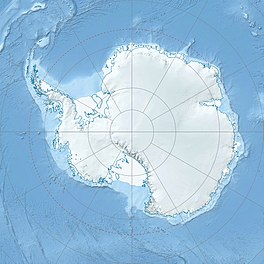Mount Markham is a twin-peaked massif surmounting the north end of the Markham Plateau in the Queen Elizabeth Range of Antarctica. The peaks have elevations of 4,350 metres (14,270 ft) and 4,280 metres (14,040 ft).
The Queen Elizabeth Range is a rugged mountain range that parallels the eastern side of Marsh Glacier for nearly 100 nmi from Nimrod Glacier in the north to Law Glacier in the south. Mount Markham, 4,350 metres (14,270 ft) high, is the highest elevation in the range.
The Geologists Range is a mountain range about 55 km (34 mi) long, standing between the heads of Lucy and Nimrod Glaciers in Antarctica. Seen by the northern party of the New Zealand Geological Survey Antarctic Expedition (NZGSAE) (1961–62) and named to commemorate the work of geologists in Antarctic exploration. The Churchill Mountains are to the north, the Queen Elizabeth Range to the east and the Miller Range to the southeast

The Churchill Mountains is a major range of mountains and associated elevations bordering the western side of the Ross Ice Shelf, between Byrd Glacier and Nimrod Glacier. They are south of the Britannia Range and north of the Geologists Range, Miller Range and Queen Elizabeth Range.
Lennox-King Glacier is a large valley glacier, about 40 nautical miles (70 km) long that flows east into the Ross Ice Shelf.
Surveyors Range is a 30 miles (48 km) long mountain range in the Churchill Mountains of Antarctica.
Prince Andrew Plateau is an ice-covered plateau, about 40 nautical miles long and 15 nautical miles wide, lying south of Mount Rabot in the Queen Elizabeth Range of Antarctica.
Rennick Glacier is broad glacier, nearly 200 nautical miles long, which is one of the largest in Antarctica. It rises on the polar plateau westward of Mesa Range and is 20 to 30 nautical miles wide, narrowing to 10 nautical miles near the coast. It takes its name from Rennick Bay where the glacier reaches the sea.
The Carnegie Range is a mountain range in the Churchill Mountains of the Transantarctic Mountains System, in the Ross Dependency of Antarctica.

The Cobham Range is a mountain range in the Churchill Mountains of the Ross Dependency, Antarctica. It extends to the north of the Nimrod Glacier.

The Nash Range is a mainly ice-covered coastal range in the Churchill Mountains of Antarctica.
Cotton Plateau is a snow-covered plateau just east of the mouth of Marsh Glacier, in the Queen Elizabeth Range.
Svaton Peaks is a cluster of rugged peaks at the north end of the Queen Elizabeth Range, Antarctica, surmounting the area between the mouths of the Heilman Glacier and Otago Glacier.
The Frigate Range is a high mountain range extending 12 nautical miles (22 km) east from Mount Markham in the Queen Elizabeth Range of Antarctica.
Lowery Glacier is a glacier about 60 nautical miles (110 km) long, a tributary of the Nimrod Glacier, which enters the west of the Ross Ice Shelf, Antarctica.
Starshot Glacier is a glacier 50 nautical miles (90 km) long that flows through the Churchill Mountains to enter the Ross Ice Shelf in Antarctica.
The Holland Range is a rugged coastal mountain range in the Ross Dependency, Antarctica, on the west coast of the Ross Ice Shelf. It is about 60 nautical miles (110 km) long.
Holyoake Range is a mountain range in the Ross Dependency of Antarctice. It is in the southern section of the Churchill Mountains, part of the Transantarctic Mountains System.
Cape Lyttelton is a cape forming the southern entrance point of Shackleton Inlet, along the western edge of the Ross Ice Shelf, Antarctica.
Robb Glacier is a glacier about 40 nautical miles (70 km) long that flows through the Ross Dependency to enter the west coast of the Ross Ice Shelf in Antarctica.







